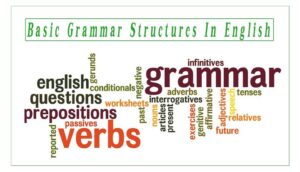Have you ever encountered the phrase “used to” and wondered about its meaning and usage? If you have, you’re not alone! In this article, we’ll delve deep into the world of “Formerly” and uncover its various facets, from its grammatical structure to its nuanced applications. So, let’s get started on this enlightening journey of linguistic exploration.
Introduction:
“Used to” is a versatile phrase with a unique place in English. It serves as a linguistic bridge between the past and the present, allowing us to reflect on experiences, habits, and changes that have shaped our lives.

Understanding the Grammatical Structure:
A grasp of grammatical structure is pivotal in mastering any language. It creates the foundation for actual expression and makes it easier to communicate precisely and accurately. Whether spoken or written, a solid understanding of grammar enhances comprehension and ensures that ideas are conveyed with precision. From constructing sentences to giving nuances, an awareness of grammatical rules empowers individuals to share their thoughts coherently and impactfully. Delving into grammatical intricacies is a fundamental step toward becoming a proficient and confident communicator.
Conveying Past Habits and States:
Discussing past habits and states involves delving into a fascinating aspect of language. This linguistic dimension allows us to articulate actions and conditions that occurred in the past, shedding light on various historical and personal contexts. Through verb tenses and sentence structures, we navigate the intricacies of describing routines, behaviors, and circumstances that were prevalent at earlier times.
When conveying past habits, the simple past tense often takes center stage. It effortlessly portrays actions that were regularly performed or habitual in the past. This tense enables us to recount activities that characterized a particular era, granting insight into the lives and routines of individuals or societies.
Additionally, discussing past states involves the use of verbs like “was,” “were,” and “used to.” These linguistic tools help us portray conditions that existed for an extended period. They paint vivid pictures of historical periods, cultural norms, and personal experiences, offering a glimpse into how things once were.
Navigating Changes Over Time:
The journey through navigating changes over time is a captivating exploration of evolution and transformation. As we traverse the course of history, cultures, societies, and even individuals undergo shifts that shape their identities. This voyage delves into the intricacies of adaptation, progress, and the ebb and flow of life’s myriad facets.
Every era carries its distinct markers, from technological advancements to cultural shifts. Navigating these changes allows us to witness the unfolding narrative of human development. It provides insights into how societies have responded to challenges and opportunities, offering a window into the resilience and creativity that characterize human endeavors.
Expressing Past Comparisons:
In the realm of language, past comparisons offer a unique lens through which we analyze and contrast bygone eras. By juxtaposing historical periods, societies, or personal experiences, we gain insights into the evolution of ideas, technologies, and cultures. This linguistic tool allows us to illuminate differences and parallels, shedding light on the vast tapestry of human development. Through historical comparison, we uncover the links that connect our history and personal narratives.
“Used To” vs. “Would”: Deciphering the Differences:
Exploring “used to” and “would” unveils distinct shades of past habits. At the same time, both reference bygone actions, “utilized to” reflects routine, while “would” implies choices. Navigating these nuances refines language precision.
Forming Negative and Interrogative Sentences:
Crafting negative and interrogative sentences adds depth to communication. By altering sentence structures, we explore contrasts and seek information. Negatives convey refusals or denials, while interrogatives pose questions to unravel mysteries. This linguistic interplay enhances our ability to express nuances, fostering engaging and meaningful conversations.
Idiomatic Expressions and Colloquial Usage:
Embracing idiomatic expressions and colloquial language enriches communication. These linguistic gems infuse conversations with vivid imagery and cultural nuances. Idioms convey meanings beyond literal interpretation, while colloquialisms add a touch of familiarity and authenticity. These elements enhance language dynamics, fostering connections and lending a vibrant touch to everyday dialogue.
Historical Context and Evolution of Usage:
Understanding historical context and usage evolution unveils language’s dynamic growth. Words and phrases metamorphose over time, reflecting societal shifts. Tracing linguistic journeys illuminates how meanings adapt, connecting past and present. This exploration enriches our grasp of language’s intricate tapestry.
Embracing “Used To” in Modern Conversations:
It is bridges past and present, infusing discussions with nostalgia. This phrase gracefully traces changes over time, adding depth to modern dialogues. Its subtle charm enriches conversations with personal stories and societal shifts.
Common Mistakes to Avoid:
Navigating language pitfalls involves sidestepping common errors. From grammar gaffes to vocabulary slip-ups, awareness is critical. Mastering these nuances refines communication, ensuring clarity and precision in expression.
Emotive Impact: Evoking Nostalgia and Sentiment:
Harnessing emotive power involves stirring nostalgia and sentiment. Language holds the key to conjuring cherished memories and deep feelings. By selecting words thoughtfully, we evoke potent emotions, fostering connections and enriching communication.
Utilizing “Used To” in Writing and Storytelling:
Writers and storytellers can harness the evocative nature of “used to” to create compelling narratives that resonate with readers personally.
Conclusion:
In conclusion, “used to” is more than just a phrase; it’s a gateway to the past, a vessel for comparisons, and a conduit for emotion. Embrace its richness to add depth and resonance to your language.
FAQs:
1. How can I practice using “used to” effectively?
Engage in conversations, read books, and write passages using “used to” to hone your proficiency and comfort with its usage.
2. Are there any regional variations in using “used to”?
While the fundamental usage remains consistent, some variations in colloquial expressions might exist in different English-speaking regions.
3. Can “used to or utilized” be used to describe ongoing habits?
No, It refers explicitly to traditions or states that are no longer true in the present.
